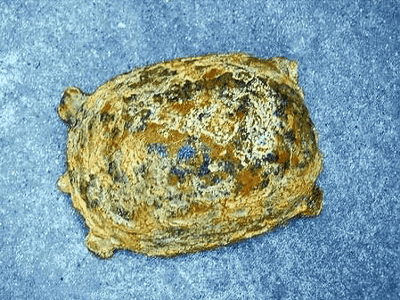A beetle found in almost perfect condition in a swamp turned out to have died about 4000 years ago.

by Trustees of the Natural History Museum, London
Perfectly preserved 4,000-year-old beetles uncovered | Natural History Museum
https://www.nhm.ac.uk/discover/news/2021/january/perfectly-preserved-ancient-beetles-uncovered.html
Perfectly-preserved'bog beetles' nearly as old as Egypt's pyramids | Live Science
https://www.livescience.com/ancient-bog-beetles-england.html

The beetles stored in the Natural History Museum in London were discovered in the 1970s. A farmer in Cambridgeshire , located in eastern England, cut an orc that had sunk in a swamp and found a beetle in almost perfect condition, and sent a specimen with concern that it might be an exotic species. is.
The beetle sent is of the type ' oak capricorn beetles ' and belongs to Cerambyx , a type of longhorn beetle. The oak capricorn beetles are beetles that live in warmer regions, and are now said to live in Southern and Central Europe, but were thought to be species that do not live in the United Kingdom.
In the end, the oak capricorn beetles were not a major threat to the ecosystem, but they were determined to be alien species and were stored as specimens at the Natural History Museum in London. The photo below is a specimen of oak capricorn beetles stored at the Natural History Museum in London. Both of them are about the size of a thumb, and although they are slightly dirty, their long antennae and legs are almost perfectly preserved.

by Trustees of the Natural History Museum, London
Decades after the donation to the museum, one day, Max Berkeley, a beetle curator at the Natural History Museum in London, worked with American researchers to dating specimens of radiocarbon. Specimens of oak capricorn beetles were stored with the found pieces of oak wood, so it was a good opportunity to test whether the same results would be obtained in plants and animals. 'This is a kind of Rosetta Stone moment,' Berkeley told the BBC.
Measurements revealed that the oak capricorn beetles and wood were 3785 years old. 'These beetles are older than the Tudor and Roman eras. During the time when Pharaohs were building pyramids in Egypt, they were biting the inside of the tree, which is very much. It's exciting, 'he emphasizes the age of the beetles.
At the time of writing the article, oak capricorn beetles did not live in the UK, but it also lived in the UK when the climate was warmer, and it may have become extinct in the UK due to the subsequent cooling. .. Berkeley pointed out that oak capricorn beetles may return to the United Kingdom in the future due to global warming in modern times.

by Trustees of the Natural History Museum, London
Related Posts:
in Creature, Posted by log1h_ik







